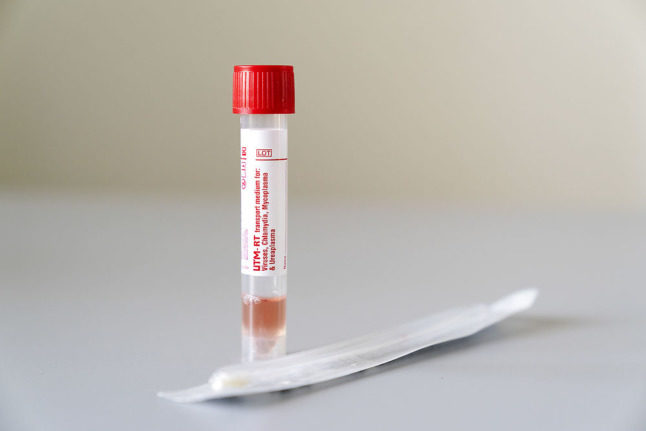The figure comes from 189,695 PCR tests, giving a positivity rate of 2.47 percent.
Meanwhile, the number of people admitted to hospital with the virus fell on Thursday by 12 to 427.
The numbers provide some sense of respite after an unusually large figure for daily infections on Wednesday, which set a new record for the epidemic in Denmark.
Wednesday saw 5,120 new cases come 195,137 PCR tests, giving a positivity rate of 2.62 percent. Two days ago, 4,148 cases were reported with the positivity rate being 2.58 percent.
Professor in clinical microbiology at the University of Southern Denmark, Hans-Jørgen Kolmos, said Thursday’s update appeared to be positive news in the context of the preceding week.
“This looks like a status quo. It’s not a large difference seen across the last week. Neither the number of infections nor the number of hospitalisations has increased further and the longer term trend appears to be stagnating,” the professor told news wire Ritzau.
READ ALSO: Denmark urges public to get booster jabs after Covid-19 infections break record
A leading health official in Denmark said on Wednesday that authorities believe Covid-19 vaccines are “probably” effective against the Omicron variant of Covid-19.
The variant, first identified in South Africa where it is now spreading exponentially according to international reports, has so far been detected 14 times in Denmark.
Danish health authorities believe vaccines are likely to be effective against the variant even though it maybe more transmissible than the currently-dominant Delta variant, the director of Denmark’s national infectious disease agency SSI, Henrik Ullum, said at a briefing on Wednesday.
At the time of the briefing, 7 cases had been confirmed in Denmark and 108 globally outside of South Africa.
“But when we as a small country have found seven, that is probably not because we have many more (than other countries) but because we are good at finding them,” Ullum said.
Indications from South Africa so far suggest Omicron is more transmissible, however.
“There’s significant concern that antibodies in vaccines do not bind quite as well,” Ullum said.
Denmark has currently restricted travel from 10 African countries but not European cases with several confirmed Omicron cases such as Portugal, Belgium and the Netherlands.
That is because the variant is not widespread in those countries, while the Danish cases are largely linked to travel from South Africa, the Danish Health Authority director Søren Brostrøm said at the briefing.




 Please whitelist us to continue reading.
Please whitelist us to continue reading.
Member comments